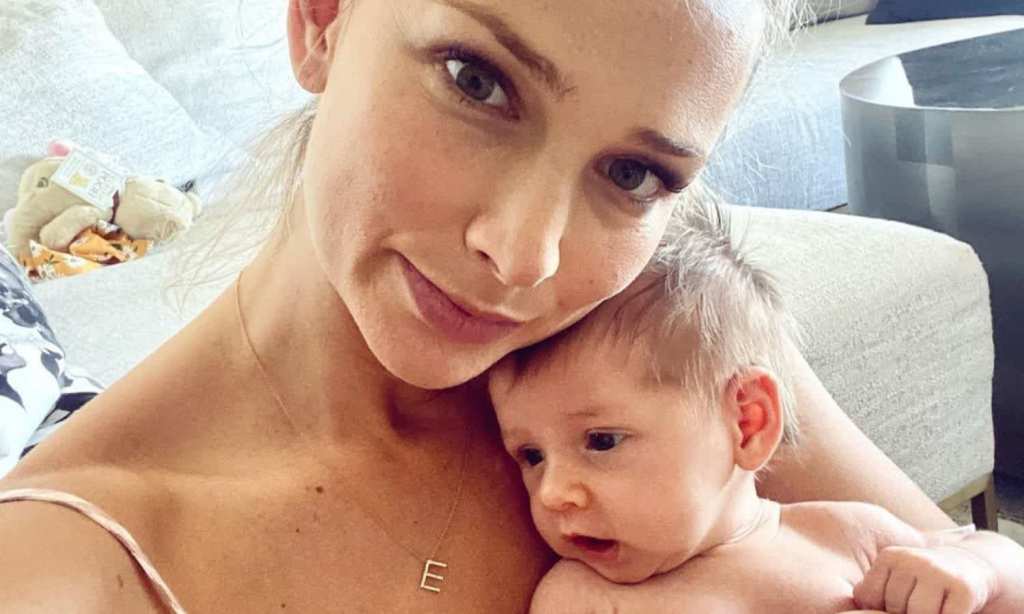The fact that humans can create, carry and give birth to other humans has always blown my mind. Even during the periods of my life in which I questioned whether I personally wanted to partake in procreating, I was still in awe of the people that did and the incredible ways their bodies rose to the challenge.
Now, as the possibility of parenthood draws closer for me, I find myself paying more attention to the way society treats pregnancy and, more specifically, what we choose to focus on once someone has given birth.
My main takeaway? We have a serious problem in the way we celebrate “post-baby bodies.”
A recent headline from an Australian publication exclaims: “Anna Heinrich shows off her incredible post-baby body one month after welcoming daughter Elle.”
The ensuing article enthusiastically praises the Bachelor winner for her slim postpartum physique and includes compliments from her social media followers along the same lines.
While the content of the piece is fairly innocuous on the surface, it does signal a deeper media trend that feels problematic even as body positivity warriors work tirelessly to fight it.
Yes, Heinrich looks lovely —she’s a gorgeous girl who would likely look incredible in any outfit and at any weight — but why do the media constantly feel the need to comment on the appearance of physiques, painting them as impressive only in the absence of any kind of weight, baby or otherwise?
Furthermore, how does this pervasive type of coverage impact pregnant or postpartum people who may feel “less than” because they don’t or won’t look the same as the figures they see being celebrated? Hell, I’m not even pregnant yet and I find myself lamenting that my pre-baby body is no match for some of the “after” pics I see in magazines.
It’s no secret that the “ideal” body shape (another problematic term) has drastically evolved over time as evidenced by art through the ages. One of the earliest works depicting the female form, Venus of Willendorf from the late Stone Age, tells us that between ten and 100,000 years ago robust was the way to go. Likewise, a quick glance at Sandro Botticelli’s The Birth of Venus further proves the point.
In the late 19th century this standard began to change with the introduction of corsets and other garments designed to shrink waists and make women appear more petite. This trend has since assumed many faces from the influx of shapewear to the ongoing issue of Instagram influencers promoting diet culture through tummy teas and heavily photoshopped images.
I should clarify that I think bodies are beautiful in every shape and I am not suggesting for one second that anyone should hide if they do lose weight quickly after giving birth because I am equally opposed to “skinny-shaming” as I am to the inverse of that.
The irony, as I see it, is that the beautiful figures we see in the earlier works of art were revered because they represented fertility which makes our contradicting collective obsession with slimming down immediately after our children are born all the more confusing.
Along with historically representing strength and resilience, carrying a child and delivering it safely is perhaps one of the most incredible feats the human body can achieve. So why do we seem to be in such a hurry to erase the fact that it happened?
As I said, I am not pregnant yet and have no idea how my particular body will change when I am nor how I will mentally react to it when it does. What I do know is that when I eventually give birth, I would love for it to be in a world where I feel comfortable and celebrated at any shape for any amount of time and it’s what I hope for all of my fellow future parents too.
In researching this article I came across a line that read: “a big healthy body was all that mattered because you were your own method of survival.” In the past, it referred to fending off dangerous predators in the wild, but I would argue that today it is equally relevant as we fend off unrealistic body expectations perpetuated by a dangerous societal norm.
Read more stories from The Latch and follow us on Facebook.

